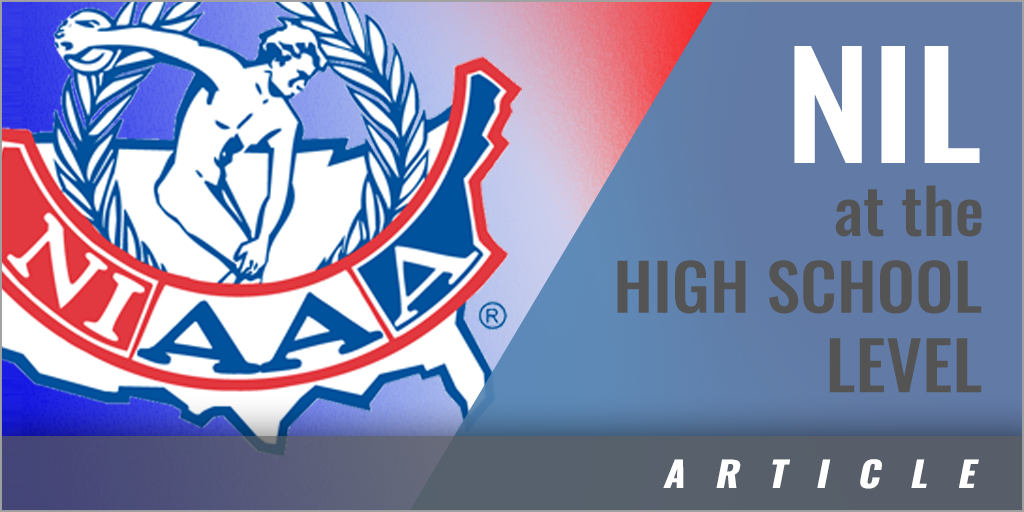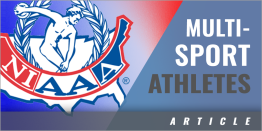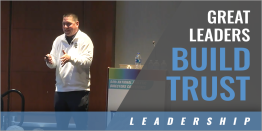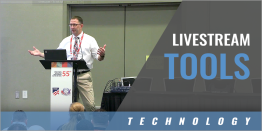|
By: Dr. Scott Grant, CAA - Asst. Professor at the University of Findlay & Founder of Triple Threat Leadership, LLC / NIL-Education.com Name, Image, & Likeness, or better known as NIL, probably brings certain thoughts to your mind as you read those words. And whether you agree with student-athletes having the ability to monetize their NIL, or if it tears at your personal core beliefs regarding amateurism and educational based athletics, it can be an overwhelming feeling not knowing how to lead through this new normal. In the last year alone we've witnessed the high school landscape shift from only one state allowing NIL, to currently 16 states, the District of Columbia, and nearly 10 more considering policy changes, as of writing this in September of 2022. Although you're all dealing with NIL at different stages of evolution within your respective states, its important to understand that this is something that will continue to become part of interscholastic athletics. As a former high school teacher, coach, and athletic director, and having worked in major Division I college athletics during the onset of NIL, Ive come to realize a few things. The uneasiness of leading during this "New Normal" seems to be exacerbated by a lack of knowledge and support around what school administrators really need to know, as well as the steps they should consider moving forward. The goal of this article is to help alleviate some of that struggle, and walk you through what I call NIL NTKs, or "NIL Need to Knows." These will help you lead your department and district through NIL more effectively, while providing a road map to consider as you build out your organized plan. NIL NTK #1: There is a lack of understanding of what NIL is, and where it came from. Name, Image, & Likeness, or better known as NIL, is a legal concept regarding a persons right of publicity and ownership of their Name, their Image, and their Likeness. The quick movement of NIL into the high school environment was predicated on the NCAA decision to adopt a new policy in June of 2021 which allowed college student-athletes to be compensated for their NIL, regardless of whether their state has an NIL law in place or not (NCSA College Recruiting, 2022). As NIL garnered publicity at the collegiate level, which like high school athletics is based on the concept of "amateurism," it became a matter of time before NIL considerations began to trickle down. NIL NTK #2: Each high school state association passes changes to bylaws and regulations differently. As more and more state associations approve changes to their regulations or bylaws to allow NIL, its important to understand that the process for that to occur is different within each respective state athletic or activities association, and so is the internal workings of those policies/regulations. There is no one size fits all in regards to process, or outcome. In some states, the state association board of directors decides what regulation or bylaw changes are put on a referendum vote, and in the case of Ohio, the school principals are the voting members. In other states, the executive board, or the commissioners themselves, may vote directly on any changes without the input of the schools they serve. Now, we all hope this doesn't happen, but there is potential for it to occur. As was the case recently in a state located in the Northeast region, the athletic directors association wasn't even aware that approving NIL in their state was being strongly considered, let alone passed without any prior direct communication. Unfortunately, this can be troublesome for school administrators as they are left working from behind developing plans and processes to lead their student-athletes, coaches, parents, and other stakeholders through understanding NIL. NIL NTK #3: NIL at the high school level is unique and different from NIL at the college level. If you've watched the progression of NIL at the college and high school level, you know that they can be very different in many areas. NIL at the collegiate level has transitioned from current student-athletes maximizing their NIL through endorsements and fan engagement, to an increase in boosters and collectives developing methods of enticing potential recruits with NIL opportunities at specific institutions. While we know enrollment inducement NIL activities which require student-athletes to attend specific institutions as part of an NIL deal are a violation, there are a lot of gray areas yet to be clarified. Although college athletic departments are now being allowed to become more involved in assisting and supporting student-athletes with NIL opportunities, there is very little that high schools are allowed to do in the same manner. High schools can develop their own processes and policies, but they need to be in alignment with their respective state association as there is no national organization that sets standard regulations. Additionally, the amount of stakeholders within the high school space involved and needing education is much larger. For example - if a high school student-athlete decides to sign an NIL deal there are a few potential considerations that don't necessarily apply for all college student athletes. Some of those may be:
While the list could go on, its important to consider that theres more to it than - "hey, will you post something on social media if I pay you $100 bucks?" Student-athletes and their families need to be organized in regards to how they're managing the student-athlete as a business, keeping them safe, and helping them understand the impact on their future college and professional lives. NIL NTK #4: School districts cant offer much NIL support, other than building an NIL Educational Plan. So you might be asking yourself - "What can our school do to help our stakeholders, and where do we start?" Great question, because one of the major concerns after analyzing NIL policies at the state high school association level is that they provide very little insight regarding what school districts are allowed to do to support their student-athletes and other stakeholders. Theres even less guidance on how to do it. Lets face it, districts aren't allowed to broker deals, facilitate payments, or benefit from a students NIL deal - and they shouldn't. But as Ive told thousands of school administrators at conferences throughout the country, its imperative that they develop and organize a strategic NIL educational plan. So now the question above turns into - "What are the steps to organizing an NIL plan for my district?" Below are three important steps to consider as you begin building your plan to lead through this new normal of Name, Image, & Likeness within your district: Step #1: Analyze your "School Community" Every school district in America is unique. The people, the community, the location, the financials, its programs, and so on. Its vital that your administrative team evaluates your school community and considers the short and long term NIL educational needs of your stakeholders. They also need to consider the expected pressure and engagement you will, or already are, experiencing. Key questions to consider in the school community analysis phase are:
And while the list of questions could easily grow, these are a solid starting point for administrative teams to consider as NIL has the capacity to impact schools of all shapes and sizes. Step #2 - Develop & Organize Your Process Schools must consider what type of policies, procedures, and structures they need to align with their new state association bylaws in order to survive and thrive in the new world of NIL. In some states, it may not require much. In others, it could potentially be the addition of a new compliance officer, or the development of a school wide NIL compliance policy that is embedded into the athletic code of conduct. Its important for schools to develop processes that allow them ample time to ensure NIL opportunities their students are considering are compliant. Schools should also provide in some form of writing a confirmation from the state association/school district that this has been completed. I always encourage districts to develop their own written NIL policy that provides an overview of the schools philosophy in regards to NIL, as well as elements such as:
You can see an example of a sample high school policy that I created as a discussion starter by visiting this link: https://bit.ly/NIL-Sample-Policy-HS. Lastly, it is important to consider specific school board regulations regarding policy development and procedural approval and implementation. Sometimes this can have numerous steps and take time to develop and push forward. Step #3 - Develop & Organize Your Educational Plan Every school district, no matter if they're located in a state with NIL or not, must understand that their stakeholders will get education and learn about NIL from somewhere. Too often the narrative and misunderstandings of NIL come from seeing the top 2% of college student-athletes driving fancy cars, or signing partnerships with large brands like Nike or Gatorade. For most high school athletic departments and their student-athletes, that's not what NIL will look like. Because of this, its important that districts develop a proactive educational plan not only for the school staff and student-athletes, but also parents and guardians, as well as community businesses. Many will want a "piece" of this, and often they truly don't know or understand what it is, and the deeper implications to consider. There are four major areas which I call the NIL Life 101 Series, that need to be organized into an applicable educational plan to ultimately prepare all students for their next steps in life, whether they choose to venture into NIL or not.
Additionally, for school districts to make this impactful and sustainable, its important to consider where and how these skill areas are already being taught within their district, and how applications of NIL can be integrated within. I'm a firm believer that NIL Education at the high school level is about holistically, and with an unbiased approach, serving all involved to help students succeed in life. The more we can empower all stakeholders to learn about NIL, and become equipped with the knowledge and resources to best support their stakeholders, then we've done the best we can for those we serve. Whether you believe NIL is right or wrong isn't the point, because ultimately we know we must help lead in this new normal. NIL just happens to be a major piece of that right now (and most likely for many years to come). My hope is that you start building your strategy & plan NOW, because Name, Image, & Likeness at the high school level is already here for many of you, and coming fast for the majority of the rest. Here to help in any way! Dr. Grant Citations: Wittry, A. (2022, July 4). First year of NIL data shoes trends favoring social media, football. NCSA College Recruiting. (2022, June 20). NCAA Name, Image, Likeness Rule. |






